The point shown below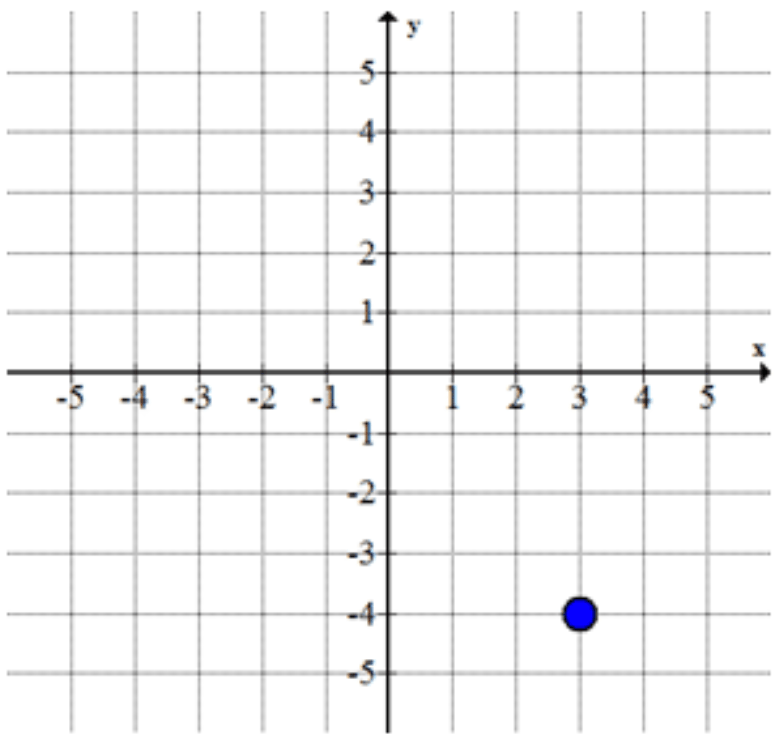
(3, -4)
The Domain of the following relation.
{(3, 1), (-2, 7), (4, -5), (8, 2)}
Domanin: {3, -2, 4, 8}
Draw a graph that represents the distance traveled of a bowling ball rolling down a bowling alley versus time.
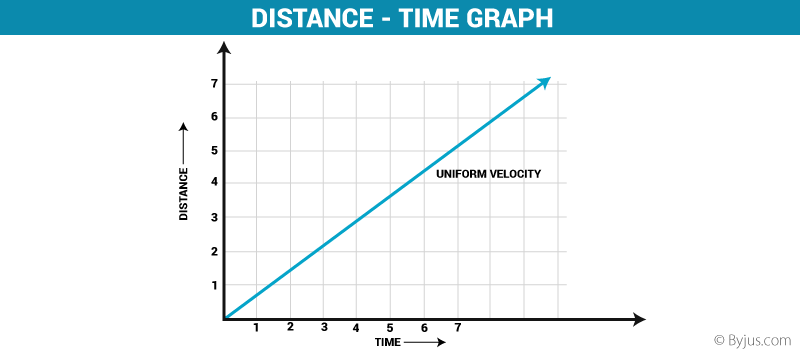
f(x) = 3x-2. f(7)=?
19
What is the common difference between these numbers?
5, -4, -13, -22,...
-9
The point A shown below.
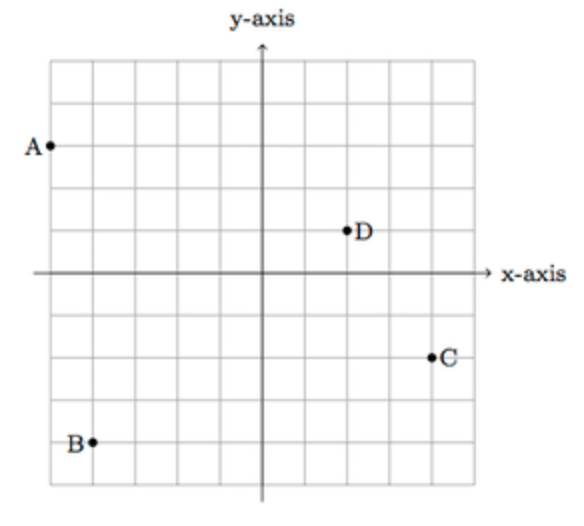
(-5, 3)
The Range of the following function.
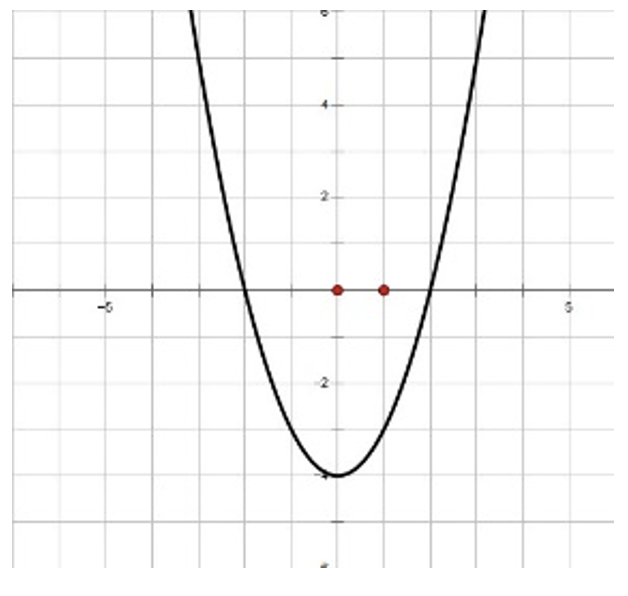
y>=-4
Does this graph represent a function?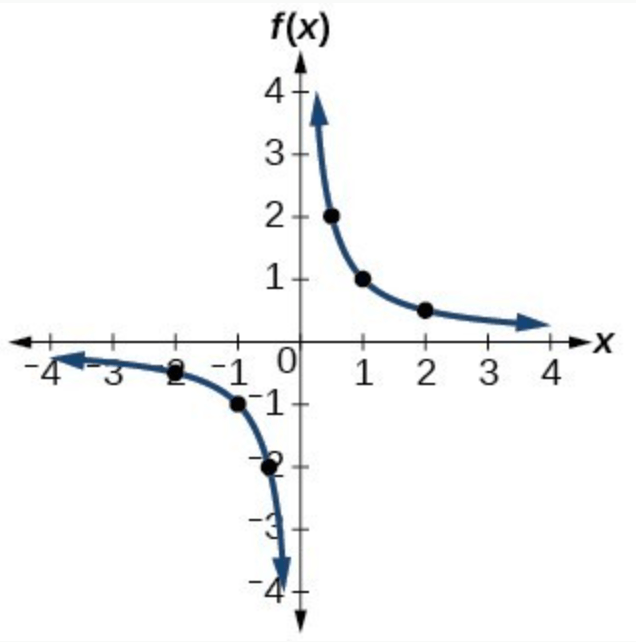
Yes
if f(x)=-2x+5 what is the value of x if g(x) = 19
x=-7
Is this an arithmetic sequence?
-14, 6, 4, 12,...
No
The distance between points G and H.
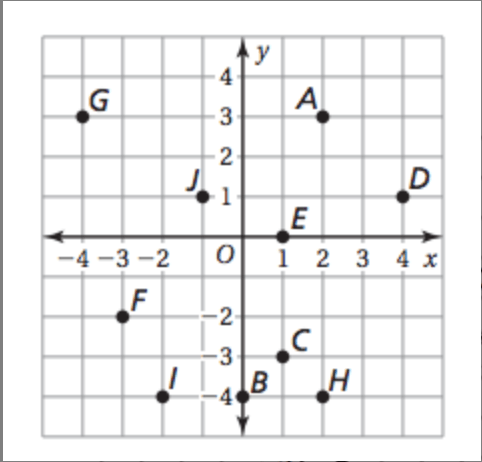
9.22 or
sqrt(85)
Determine the Range of this function
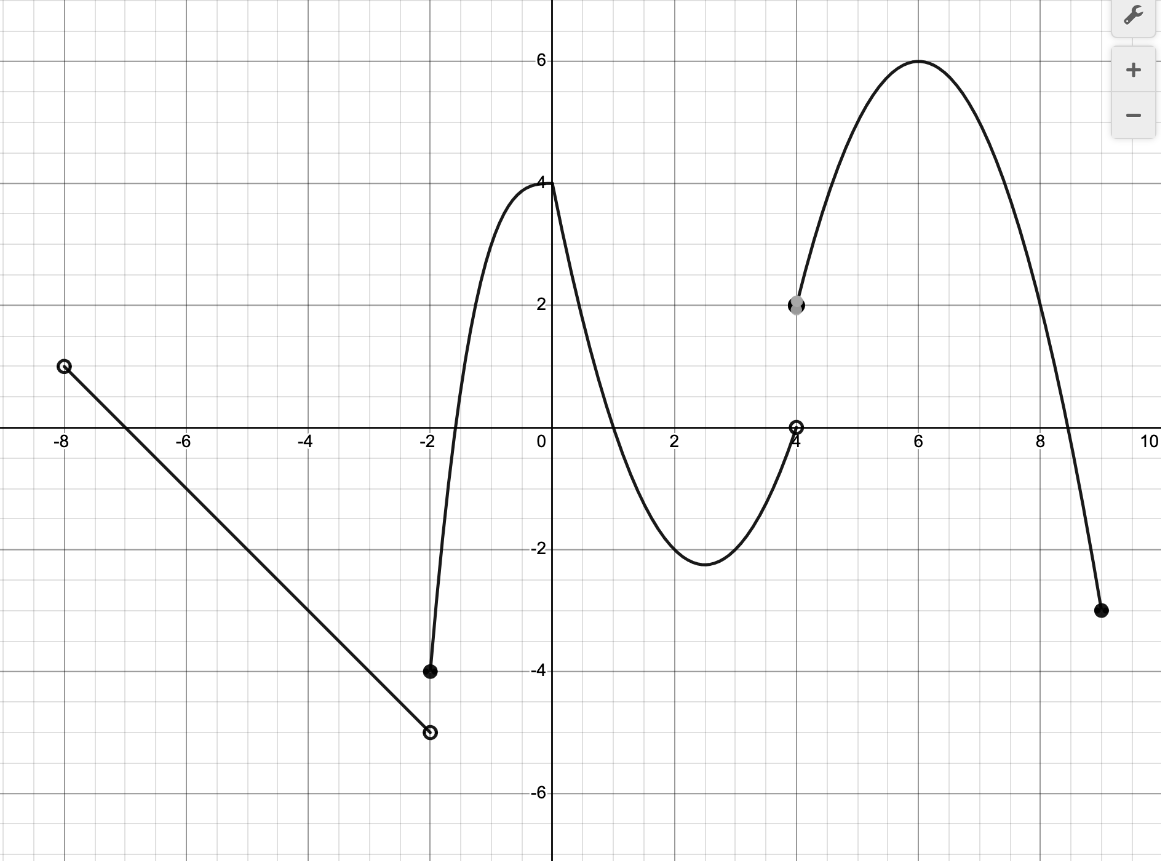
Range: -5<y<=6
Which color graph represents a ball falling from a building.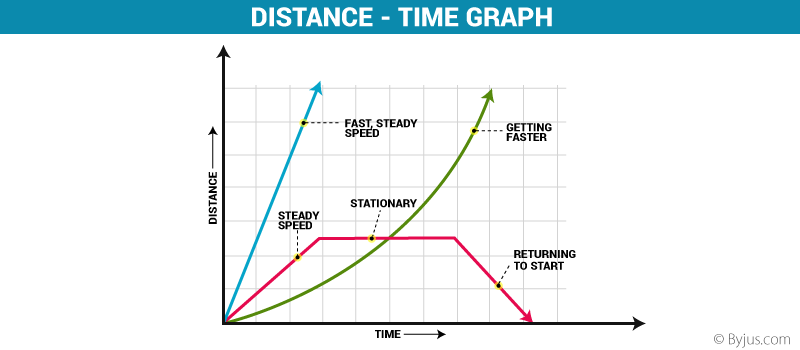
Green
f(x) = 6x^2+2
g(x) = -x^2-7
Evaluate
f(-4)-g(3)
114
determine the equation for the nth term in this arithmetic sequence.
17, 9, 1, -7,...
a_n = 25-8n
Determine the area of the triangle.
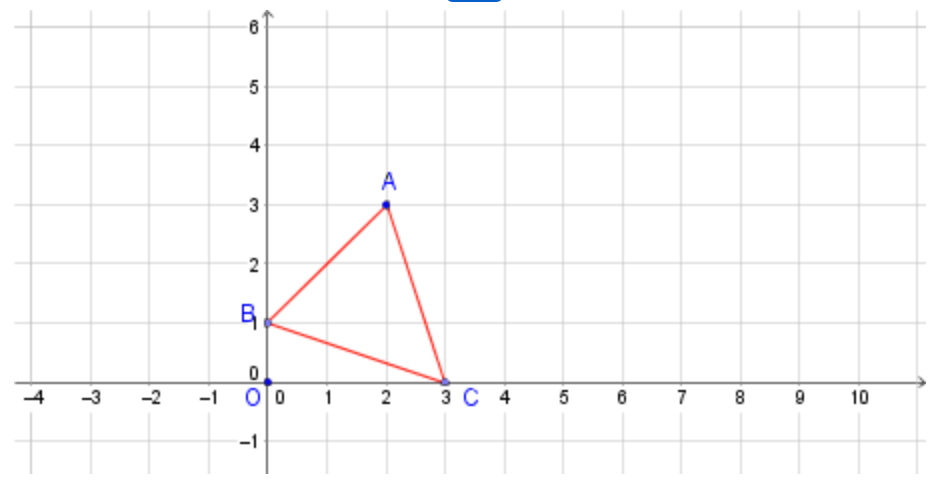
4
What is the domain of the function
f(x)=sqrt(x-4)/(x^2+25)
Domain:
x>=4
x^{3}+2x^{2}-x-1
Determine the zeros of this function
x={-2.25, -0.556, 0.802}
f(x) = 3x-4
g(x)=2x^2+4x-8
2(-g(4)+f(3))=?
-70
A scientist started with 136 bacteria. Of these 136, 54 are special bacteria that produce one additional bacteria every day. The 54 new bacteria are normal and not special like that ones that produced them. How many bacteria will the scientist have after 9 weeks.
3106
This is the name of the type of coordinate system.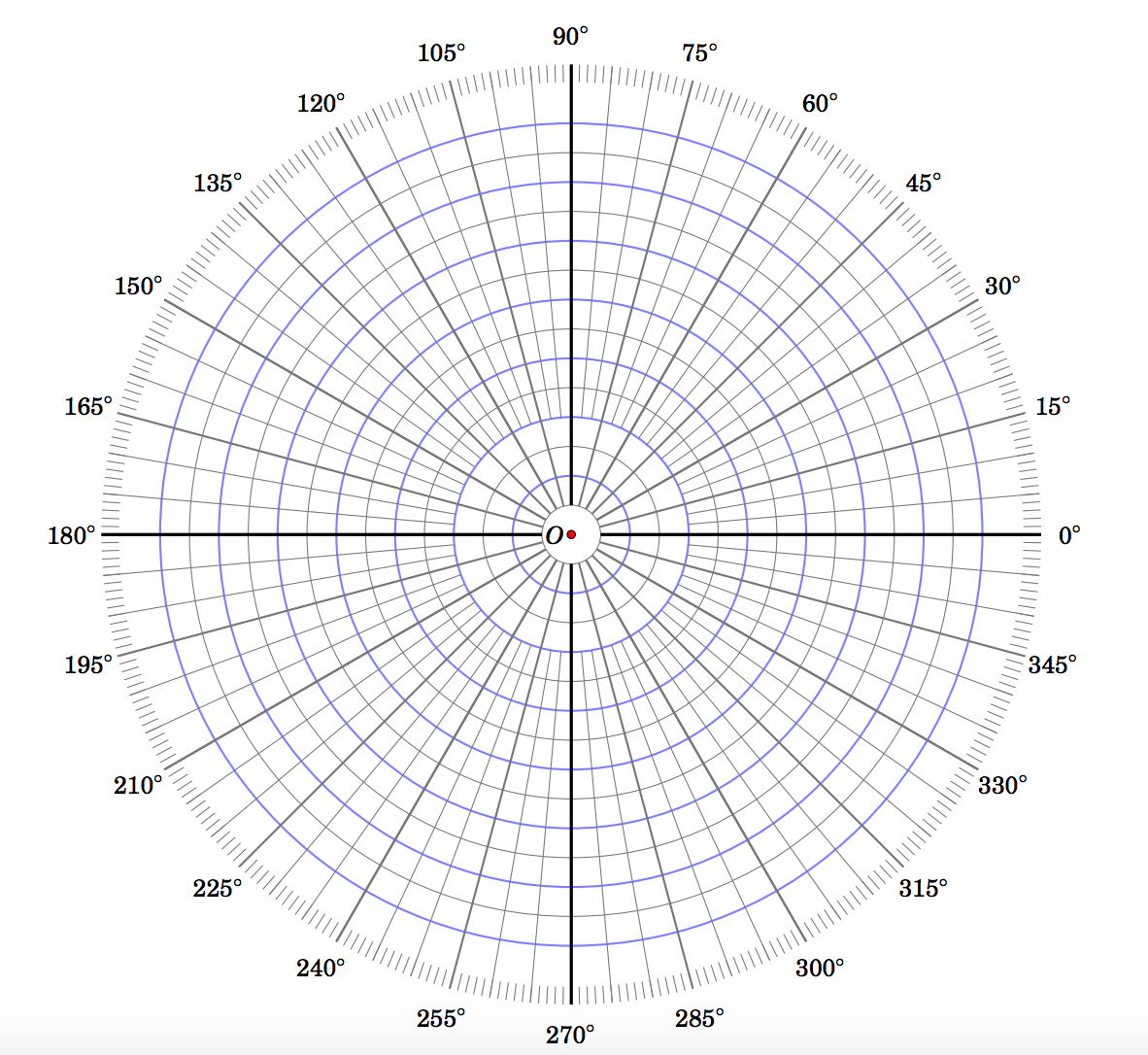
Polar coordinate plane
What is the range of the function
y=sinx
-1<=y<=1
Cary is running around a track at a constant rate. Draw a position versus time graph for Cary's running a mile.
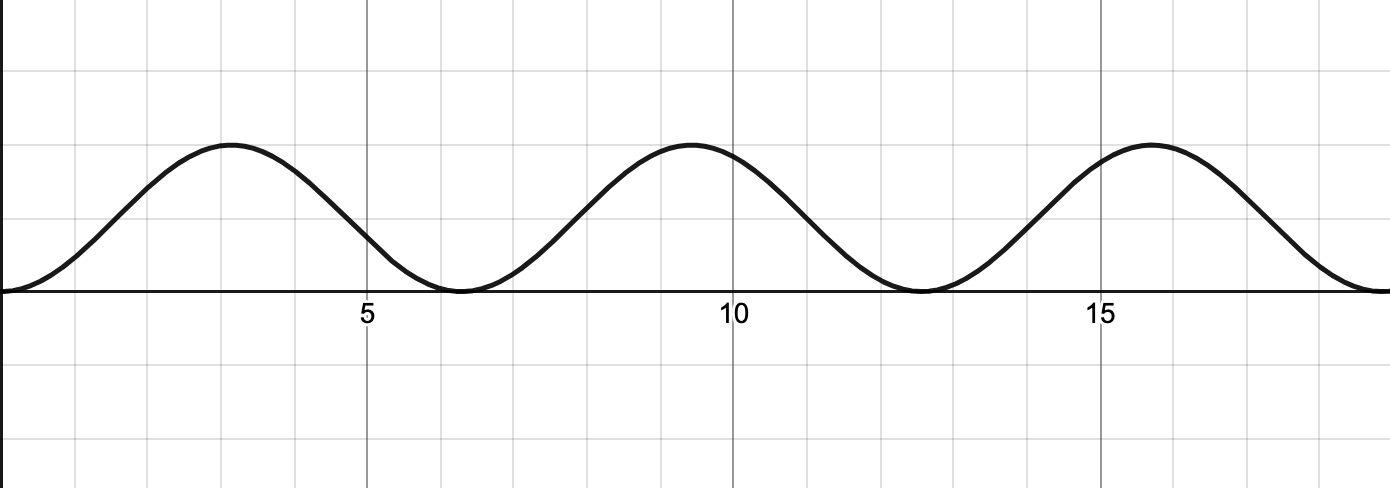
f(x) = -3x^2+7x-3
g(x) = 2x-4
f(g(-5))=?
-689
Approximately 8.8 million new stars form in the Magellanic Clouds every ten years. As of 25 years ago, there were approximately 33 billion stars in the Magellanic Clouds. In the Milky way, there are approximately 100-400 billion stars. How many stars will be in the Magellanic clouds in 10,000 years?
41,817,600,000 stars (approx.)